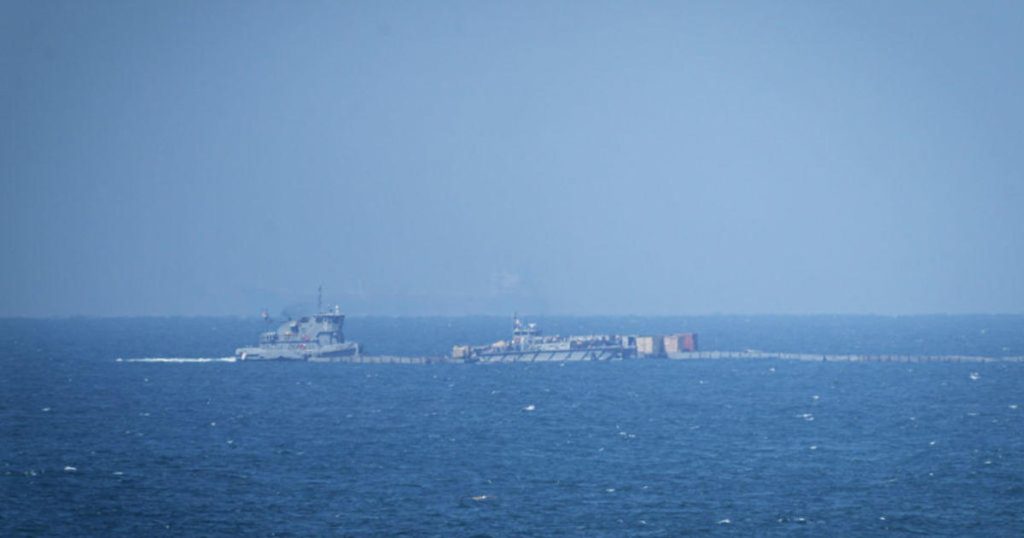President Biden ordered the construction of a temporary pier earlier this year to deliver humanitarian aid to Gaza, despite concerns from some U.S. Agency for International Development (USAID) staffers that it would be difficult to pull off and could hinder efforts to open more efficient land crossings to get food into the territory. The $230 million military-run project, known as the Joint Logistics Over-the-Shore system (JLOTS), was only operational for about 20 days and faced a number of challenges, leading aid groups to withdraw from the project by July. The focus on using JLOTS also detracted from advocacy for opening land crossings, which were seen as more efficient. Despite these challenges, the project aimed to provide food for 1.5 million Gaza residents for 90 days, falling short and only managing to feed about 450,000 people for a month before shutting down.
At the time of Biden’s announcement, virtually all of Gaza’s 2.3 million residents were struggling to find food, with more than half a million facing starvation. The U.S. sea route and pier were intended to address this dire situation, but faced numerous setbacks including damage from high waves and bad weather. The United Nations World Food Program ended cooperation with the project after an Israeli rescue operation raised concerns about the neutrality and independence of workers in the conflict. Despite these challenges, the U.S. National Security Council stated that the project had a real impact in delivering food to hungry civilians in Gaza, emphasizing the efforts made to address the humanitarian crisis in the region.
A watchdog report alleged that the U.S. failed to honor commitments made with the World Food Program, including the placement of the pier in north Gaza where the need for aid was greatest, and the provision of security by a U.N. member nation to maintain neutrality among Gaza’s warring parties. However, the Pentagon placed the pier in central Gaza instead, with Israel’s military ultimately providing security after a neutral country could not be found. This decision raised concerns about the security and neutrality of aid distribution. Despite these challenges, the U.S. government emphasized the importance of the pier in delivering aid to Gaza during a critical time, and the efforts made to address the humanitarian crisis in the region.
The USAID inspector general report highlighted concerns from staff members that the focus on using JLOTS would detract from advocacy for opening more efficient land crossings for aid delivery. However, once President Biden issued the directive, the Agency’s focus shifted to using JLOTS effectively to deliver aid to Gaza. The project faced challenges such as weather damage and security concerns that limited its effectiveness in providing aid to Palestinians. Despite these challenges, the U.S. government emphasized the importance of the pier in delivering food to hungry civilians in Gaza and the efforts made to address the humanitarian crisis in the territory.
Overall, the temporary pier constructed to deliver humanitarian aid to Gaza faced various challenges such as damage from weather conditions, security concerns, and limitations in aid delivery. The project, known as the Joint Logistics Over-the-Shore system, aimed to provide food for a large portion of Gaza’s population during a critical time of need but fell short of its target. The U.S. government faced criticism for failing to honor commitments made with aid organizations, leading to concerns about the neutrality and effectiveness of aid distribution. Despite these challenges, efforts were made to address the dire humanitarian situation in Gaza and provide food assistance to those in need.


